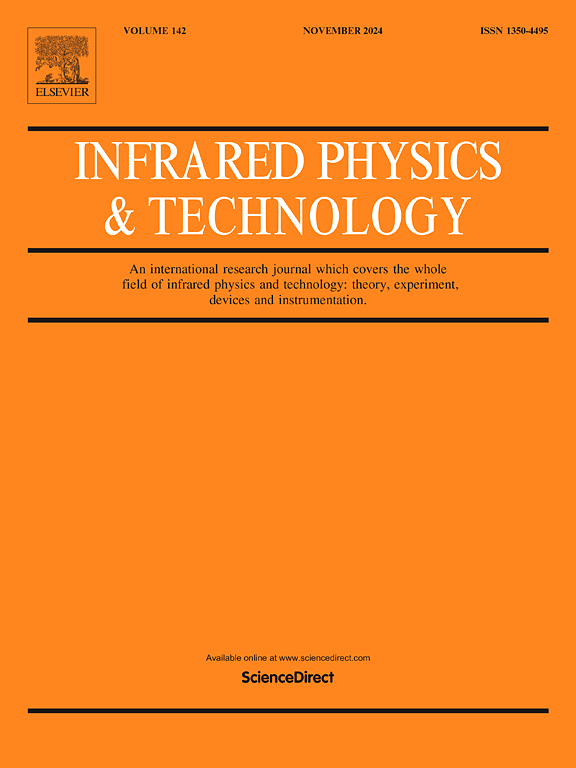Enhanced yellow fluorescence emission by co-doping Tb3+ into Dy3+:LuPO4 crystal
IF 3.1
3区 物理与天体物理
Q2 INSTRUMENTS & INSTRUMENTATION
引用次数: 0
Abstract
The Dy3+:LuPO4 and Dy3+/Tb3+:LuPO4 crystals were successfully synthesized by high temperature solution method. The primary characteristics, including crystal structures, chemical composition, phonon energy, J-O theory, and polarized absorption and emission spectra, were systematically analyzed. The substantial absorption characteristics demonstrated by Dy3+:LuPO4 and Dy3+/Tb3+:LuPO4 crystals at 451 nm, featuring absorption FWHMs of 6 nm and cross-sections of 5.96 × 10-21 cm2, suggest the effective compatibility with readily available blue laser diodes for optical pumping. The energy transfer mechanism between Dy3+ and Tb3+ ions was discussed in detail. Co-doped Tb3+ ions not only effectively improve the emission cross-section and fluorescence intensity of Dy3+:LuPO4 crystal at 574 nm, but also reduce the lifetime of the upper laser energy level 4F9/2, which indicates that Tb3+ ions can play a better sensitization effect on the emission of Dy3+ ions in the yellow wavelength band. The results reveal that Dy3+/Tb3+:LuPO4 crystal is a promising yellow laser gain medium.

在Dy3+:LuPO4晶体中共掺杂Tb3+增强黄色荧光发射
采用高温溶液法制备了Dy3+:LuPO4晶体和Dy3+/Tb3+:LuPO4晶体。对其晶体结构、化学成分、声子能量、J-O理论、极化吸收和发射光谱等主要特性进行了系统分析。Dy3+:LuPO4和Dy3+/Tb3+:LuPO4晶体在451 nm处的吸收特性,吸收峰宽为6 nm,截面为5.96 × 10-21 cm2,表明它们与现有的蓝色激光二极管有效兼容,用于光泵浦。详细讨论了Dy3+和Tb3+离子之间的能量传递机理。共掺杂Tb3+离子不仅有效提高了Dy3+:LuPO4晶体在574 nm处的发射截面和荧光强度,而且降低了激光上层能级4F9/2的寿命,说明Tb3+离子对Dy3+离子在黄色波段的发射具有较好的增敏效果。结果表明,Dy3+/Tb3+:LuPO4晶体是一种很有前途的黄色激光增益介质。
本文章由计算机程序翻译,如有差异,请以英文原文为准。
求助全文
约1分钟内获得全文
求助全文
来源期刊
CiteScore
5.70
自引率
12.10%
发文量
400
审稿时长
67 days
期刊介绍:
The Journal covers the entire field of infrared physics and technology: theory, experiment, application, devices and instrumentation. Infrared'' is defined as covering the near, mid and far infrared (terahertz) regions from 0.75um (750nm) to 1mm (300GHz.) Submissions in the 300GHz to 100GHz region may be accepted at the editors discretion if their content is relevant to shorter wavelengths. Submissions must be primarily concerned with and directly relevant to this spectral region.
Its core topics can be summarized as the generation, propagation and detection, of infrared radiation; the associated optics, materials and devices; and its use in all fields of science, industry, engineering and medicine.
Infrared techniques occur in many different fields, notably spectroscopy and interferometry; material characterization and processing; atmospheric physics, astronomy and space research. Scientific aspects include lasers, quantum optics, quantum electronics, image processing and semiconductor physics. Some important applications are medical diagnostics and treatment, industrial inspection and environmental monitoring.

 求助内容:
求助内容: 应助结果提醒方式:
应助结果提醒方式:


